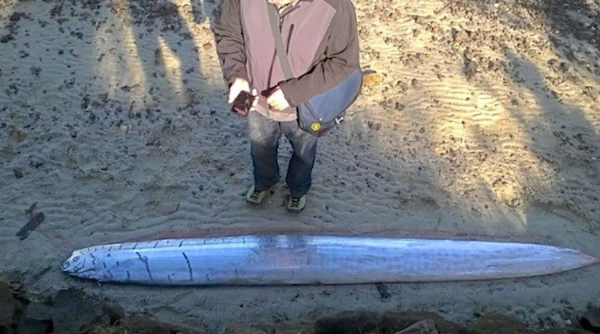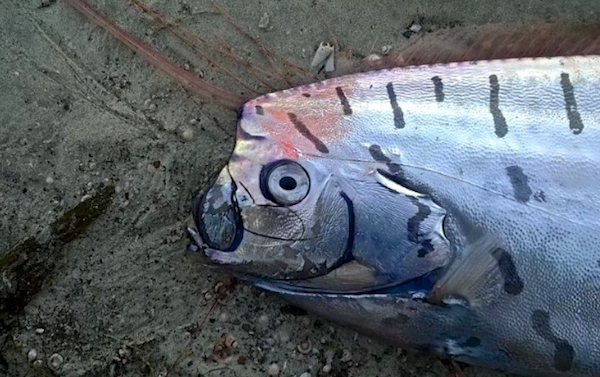
In 2013, one of the rarest creatures on Earth, the oarfish, was found beached many times in and around the Southern California area, and now it’s been found washed ashore in New Zealand. The Oarfish, one of the few remaining creatures from the prehistoric era is often called the real life “sea serpent” due to it’s unique length and appearance.
This past month, another rare sighting of this normally deep-water dwelling fish was found – but, this time, it was discovered in New Zealand. The oarfish is a sight to behold, and quite often causes a commotion when it does wash ashore – which is extremely rare.

BYPASS THE CENSORS
Sign up to get unfiltered news delivered straight to your inbox.
You can unsubscribe any time. By subscribing you agree to our Terms of Use
Latest Video
According to GrindTV:
Oarfish rarely wash ashore, but when one does the bizarre-looking sea creature usually creates a bit of a stir, as one did the other day on the southeastern coast of the south island of New Zealand.
Don Gibbs was walking along the salt marsh in Aramoana when he encountered on the beach an unusual sea creature that some have previously mistaken for some sort of sea serpent.
Gibbs phoned Department of Conservation service manager David Agnew and asked him to come take a look, according to the Otago Daily Times.
“It was very unusual looking,” Agnew told the Daily Times.
In his 20 years at DOC, Agnew had never seen anything like it, so on Thursday morning he contacted Tessa Mills of the New Zealand Marine Studies Centre and asked if she could identify the sea creature.
“From his description I guessed it would be an oarfish and when his photos came through it was confirmed,” Mills told GrindTV in an email. “There are thought to be only two species and this is the southern one, Regalecus glesne.”
This oarfish was nearly 10 feet long, but they can grow up to 36 feet; an 18-footer was discovered off California in 2013. Oarfish are typically found in deep water in tropical oceans.
Not surprisingly, the find created quite a buzz.

“There has been lots of social media interest and comments and questions on the find,” Mills told GrindTV. “And I have spent most of today talking to newspapers and TV channels.”
Everybody wanted to know more about the oarfish.
“Little is known about the oarfish,” Mills said. “When this was dissected, its stomach was full of krill. Other specimens have also been found stuffed full of krill.
“They have been some caught on video in recent years and they have been observed swimming vertically with their pectoral fins out to the side, which is how they get their name `oarfish.’”
Mills said it is rare to find an oarfish washed up in this area—only five reports of them over the past 150 years, the last being in nearby Dunedin in 1998.
“The oarfish was in great shape,” Mills said. “Its stomach was full, so it did not starve to death. It seems the strandings often occur after earthquakes or storms, and we have just had a storm here, so I think it just got washed in and stranded on the salt marsh.”


